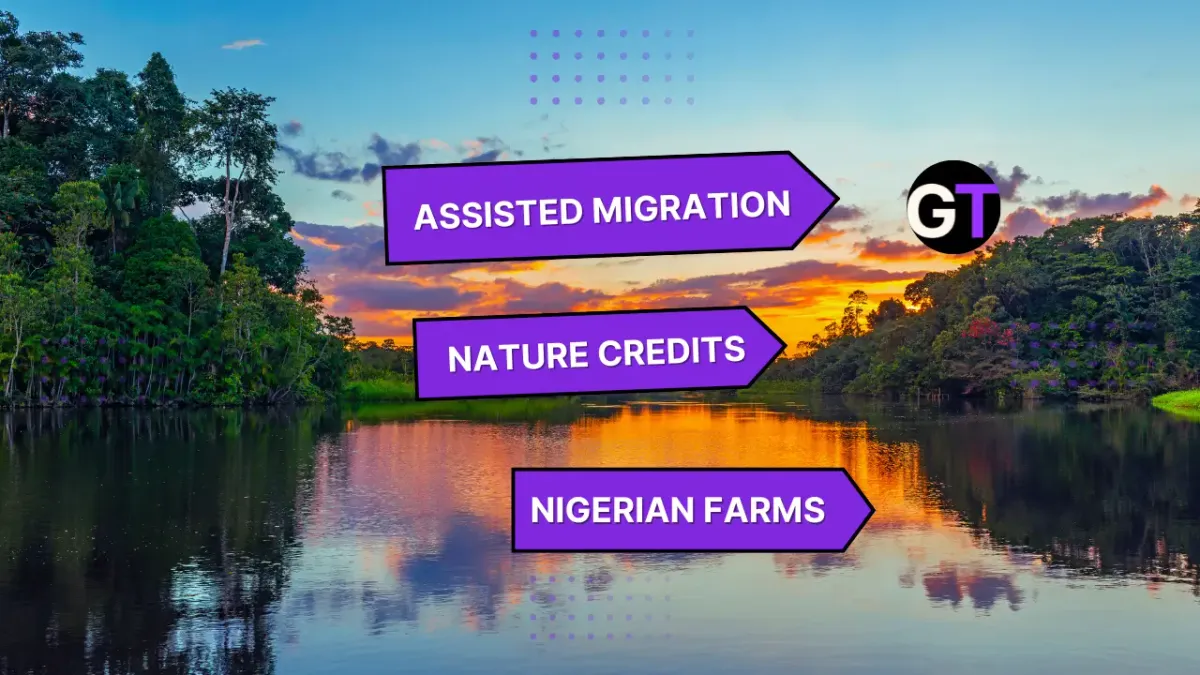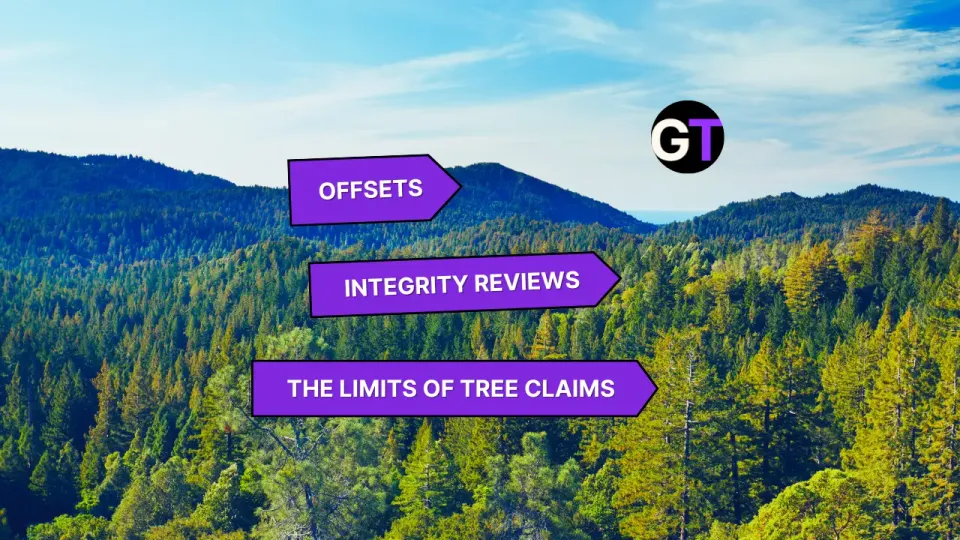Assisted Migration, Nature Credits & Nigerian Farms
The forest finance weekly: pilots in Liberia, credits in India, new funds in Brazil, and carbon bets in Nigeria.

100M+ Carbon Credits Locked in H1 2025 — But What’s Actually Getting Bought?
Fresh data from AlliedOffsets shows that over 100 million carbon credits were snapped up in offtake agreements in the first half of 2025, with nearly half tied to nature-based removals (NBS). Among the deals that disclosed project types—only about 70%—a striking 90% of credits were for removals, and NBS outpaced tech-based CDR by 2.6x. Yet, 30 million tons remain unclassified by project type, and many commitments are still just that—promises for future offtakes. As the market swells, so does the need for transparency.
💬 Will buyers keep signing blank checks, or start asking what’s actually in the carbon credit cart?
👉👉 Read more in AlliedOffsets
Liberia has a new plan to protect its rainforests. Can it work?
Liberia is rolling out a pilot that flips the script on forest finance: instead of logging payouts, 28 communities in Sinoe County will earn $1.50 per hectare each year to protect 50,000 hectares of rainforest — totaling $75,000 annually, twice what a logging deal would offer. Funded by Ireland and designed by activist Silas Siakor, this “non-market” initiative bypasses the bureaucracy of carbon credits, putting direct cash in local hands for conservation. Half the budget supports communities, while the rest funds implementation. Scaling to 200,000 hectares could push payments to $300,000 a year — but it needs more backers. The first payments are rolling out now, in what could become a model for rainforest protection across Africa.
💬 What will it take — financially and politically — to scale up direct-pay conservation models like Liberia’s beyond pilot projects?
👉👉 Read the full article on Mongabay
Base Carbon Secures Expansion Options for India ARR Project
Toronto-based Base Carbon has locked in two no-cost options to expand its India afforestation, reforestation, and revegetation (ARR) project by up to 20 million additional trees, bringing long-term carbon credit generation under its belt. With $6.7M of $13.6M already deployed and Verra registration underway, the project in Uttar Pradesh is now poised for deeper community impact and scaled returns. Fruit-bearing and culturally significant trees planted on smallholder lands promise not just removals, but tangible local benefits. First credit issuance is expected in H1 2026.
💬 Can Base Carbon turn these expansion options into outsized returns in a tightening removal market?
👉👉 Read more in The Globe and Mail
EU proposes Nature Credits Roadmap
With a €65 billion biodiversity funding gap hanging over the EU, Brussels is making a move: enter Nature Credits — a new mechanism to attract private capital into ecosystem restoration. Think carbon credits, but for wetlands, forests, and farm fields. The Nature Credits Roadmap, launched in July, lays out plans to certify, pilot, and scale biodiversity-linked investments across the bloc. Pilot projects are already running in France, Estonia, and Peru, with full framework deployment aimed for 2027. The goal? Clear standards, credible metrics, and a functioning market that rewards land stewards — from farmers to Indigenous communities — for nature-positive outcomes.
💬 Can nature credits bridge the biodiversity finance gap, or will loose standards sink another well-meaning market?
👉👉 Read more via British Agriculture Bureau
$125B Forest Fund Needs Financial Firewalls, Not Just Ambition
Brazil’s flagship $125 billion Tropical Forest Forever Facility (TFFF) aims to raise capital from global markets and return profits to rainforest nations — but watchdogs warn it’s not enough. Global Witness argues that governments must pair this bold climate finance push with binding laws to stop trillions in private capital from fueling deforestation. While the TFFF bans investments in coal, oil, and deforestation-linked assets and earmarks 20% of payments for Indigenous and local communities, loopholes in global finance remain vast. Without new regulations, the initiative risks becoming “a lifeboat on a sinking ship.”
💬 Can the TFFF turn the tide — or will finance laws decide whether forests fall or stand?
👉👉 Read more at Global Witness
Green Credits Now Tied to Survival, Not Just Ceremony
In a shift from counting trees to counting results, India has revamped its Green Credit Programme to award credits only after five years of verified restoration and a 40% canopy cover, rather than immediately after planting. The update, notified on August 29, replaces the 2024 method that granted credits upfront based on planting numbers. Now, credits hinge on outcomes like tree survival and increased vegetation, and a verification system ensures independent oversight. Though this adds teeth to the program, questions linger.
💬 Will we actually get the receipts, or just more green gloss?
👉👉 Read more in The Hindu
Carbon Revenues Bring Afforestation Into Focus
Afforestation is no longer just a long-term land play—it’s attracting serious investor interest as ARR (Afforestation, Reforestation, and Revegetation) credits fetch premiums of up to $70 per tonne. Major buyers like Microsoft and Meta are locking in multi-year offtake deals, helping shift market attention from carbon avoidance to carbon removal. With verified results now a must, projects are under growing pressure to deliver not just trees, but measurable, durable sequestration—especially in emerging markets seen as carbon sinks.
💬 Can carbon-funded forestry live up to the hype, or will credibility crumble under pressure?
👉👉 Read more in New Private Markets
Can Tree Relocation Future-Proof Sweden’s Forests?
Sweden is investing 12 million SEK in a bold four-year research project exploring assisted migration — relocating tree species to areas where they’re more likely to survive under future climate conditions. Led by SLU and backed by multiple universities, the study will test eight ecologically and economically valuable deciduous species, including walnut, oak, and sycamore maple. While the strategy carries ecological and legal risks, researchers aim to assess not just environmental outcomes but also the regulatory and social factors that could make or break its implementation. As southern Sweden’s spruce forests face increasing climate stress, this project could mark a shift toward proactive, climate-adaptive forest management.
💬 Could assisted migration become a mainstream tool in the forestry climate toolbox — or will public and ecological risk push it to the fringe?
👉👉 Read more via SLU
UK PACT Opens New Funding Round for Nature-Based Solutions in Kenya
The UK PACT programme has launched a fresh funding call for innovative projects that use nature-based solutions to advance Kenya’s low-carbon, climate-resilient transition. Eligible organisations—including think tanks, NGOs, and community groups—can apply for support on initiatives like commercial forestry and smallholder agroforestry that align with Kenya’s national climate goals. Priority will be given to inclusive consortia with local or underrepresented leadership. The deadline for applications is 26 September 2025.
💬 Could this help mainstream agroforestry and forestry as viable green growth pathways in Kenya?
👉👉 Apply via UK PACT
Canada Issues Tree Planting Update
Canada’s flagship 2 Billion Trees program has now signed agreements to plant nearly one billion trees since its launch in 2021, with 228 million already in the ground. Backed by provinces, Indigenous partners, municipalities, and NGOs, the initiative is key to restoring fire-damaged forests, rebuilding biodiversity, and sequestering carbon. Still, with less than a quarter of the total planted and 2030 looming, delivering on the full promise will require a sharp acceleration in planting, coordination, and verification.
💬 With five years and nearly 1.8 millio left to go, what will it take to get Canada’s 2 Billion Trees over the finish line — on time and in full?
👉👉 Read the press release on Canada.ca
Can Carbon Markets Unlock Sustainable Agriculture in Nigeria?
A new study in ScienceDirect explores how voluntary carbon markets (VCMs) could open a fresh revenue stream for Nigeria’s agriculture sector—particularly smallholder farmers—by monetizing sustainable practices like climate-smart farming. The potential is large: carbon credits could improve livelihoods, attract private investment, and build resilience to rising temperatures. But hurdles remain: low awareness, weak technical capacity, and murky regulation continue to limit uptake. The authors point to success stories in Kenya and Colombia, urging Nigeria to follow suit by creating a clear policy framework and leveraging private-sector partnerships to catalyze market growth.
💬 Can Nigeria build a credible carbon market pipeline—and attract investors before the window closes?
👉👉 Read the full, study in ScienceDirect
National Geographic Seeks Proposals to Build Resilience in Agriculture
The National Geographic Society, in collaboration with PepsiCo’s Food for Tomorrow initiative, has opened a funding call for projects that boost resilience in farming systems through science-backed, locally grounded innovation. Grants of up to $150,000 will support land-based projects that improve soil health, biodiversity, watershed integrity, and livelihoods—particularly in communities facing climate and ecological stress. Eligible projects must test real-world regenerative practices with local collaborators and focus on one or more key food crops, including corn, rice, soy, oats, cocoa, and more. Applications are due September 30, 2025.
💬 Can regenerative agriculture scale without losing its roots in local knowledge?
👉👉 Apply via National Geographic

Edited by Chris Harris

This work is licensed under a
Creative Commons Attribution 4.0 International License.





